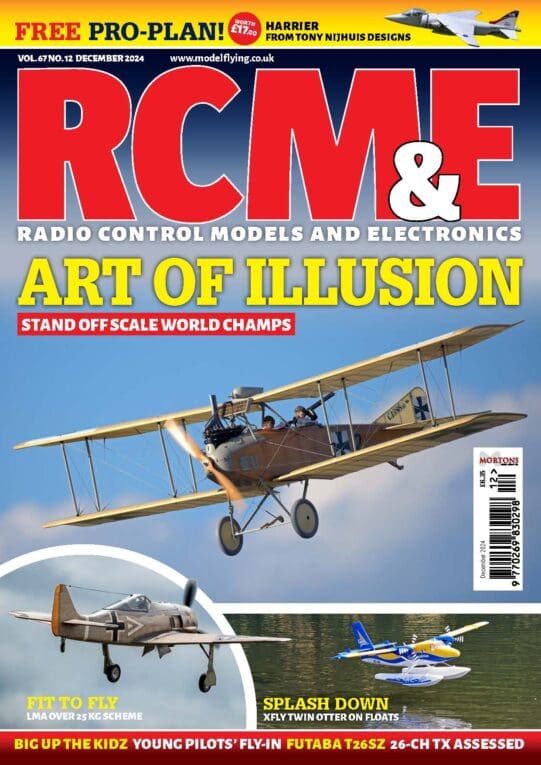When it comes to model photography, there’s a lot to be said for a low winter sun. Chris Williams gets his camera out…
Words & photos by Chris Williams
Sometimes, a low sun combines with a lingering mist and can create conditions like no other, camera wise. Thus, it was, when the posse foregathered at County Model Flying Club in mid January of this year, I was pretty quick to attach the camera to as many of my models as possible to capture the moment…
Enjoy more RCM&E Magazine reading every month.
Click here to subscribe & save.
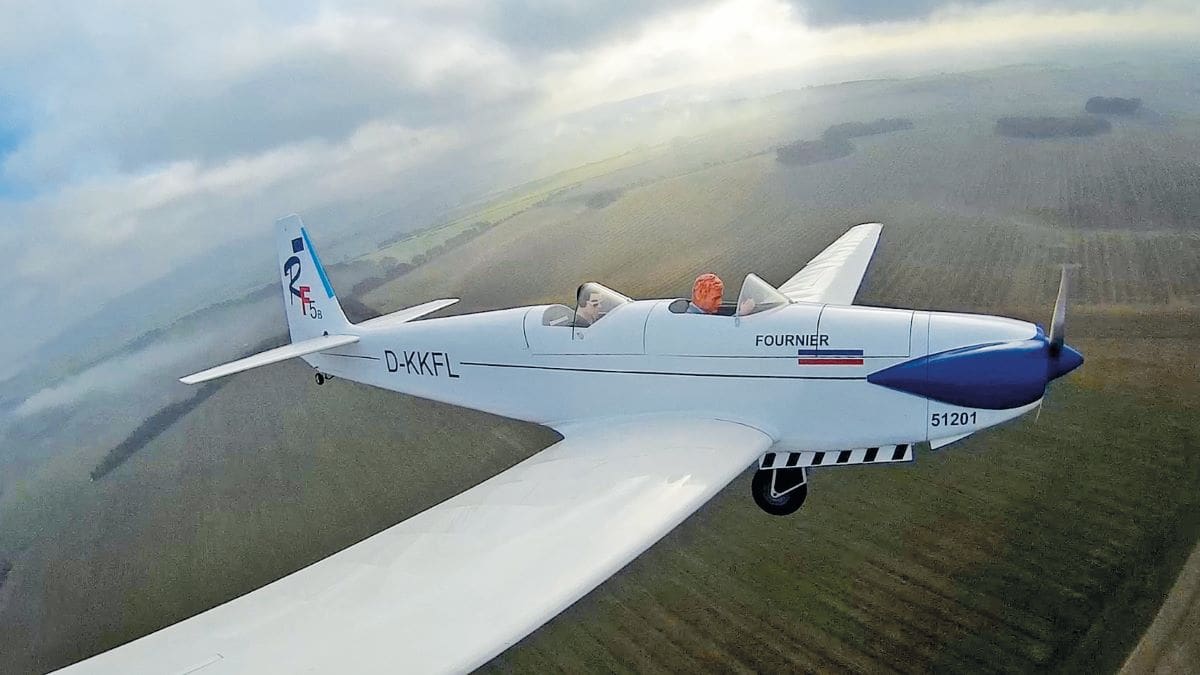
PROJECT CONCLUSION
In the fullness of time the reduced-scale version of the Rhonadler 35 sat on the bench, all the I’s crossed and T’s dotted (I have my own way of doing things!) With a generous wing area and an all-up-weight of around 12lbs, this was in no way going to be a lead sled, but the outcome was going to interesting.
To recap, I say interesting because, as with the larger version, this model’s wings feature an extremely thick scale section at the root, which transitions to my usual model-specific much slimmer section at the tip. This translates roughly to 20% chord thickness down to 12%. At the same time, you would be hard pushed to find a wing more highly tapered than this one: tapered wings usually prompting pursed lips and sucking of the teeth from the casual observer.
Come the day, the Rhonadler (Ronnie to her friends) sat at the end of the towline behind Smallpiece’s tug on the hallowed ground at County Model Flying Club. The light wing loading manifested itself as the glider lifted off the ground very quickly and proceeded in a stately fashion behind the tug. Once released from the tow it quickly became obvious, in the light wind conditions present, that the flying speed was much slower than with my same sized Slingsby Petrel, which shares the same wing, but without the scale section at the root.
The Petrel, famously copied from the Rhonadler by Fred Slingsby, has been one of my favourite gliders for years, but it might be interesting to have a real-world comparison between these two wing section arrangements in aerodynamically similar models.
It’s my considered opinion that when it comes to wooden gliders the Petrel has no equal in performance terms. Here, you have a model that is extremely agile, with an excellent efficiency thanks to an airfoil that requires nothing in the way of washout and a braking ability that allows landing safely in tightest of spots, not to mention the world’s longest ailerons!
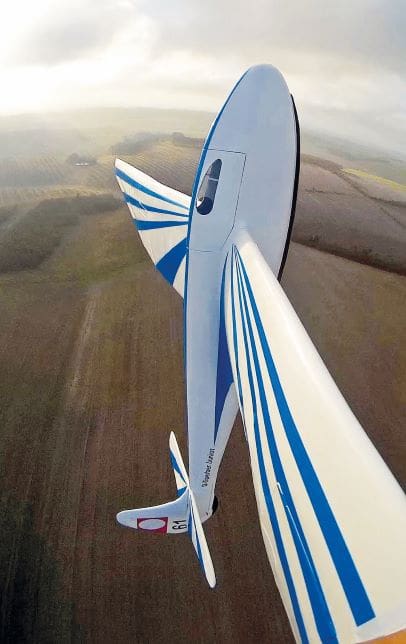
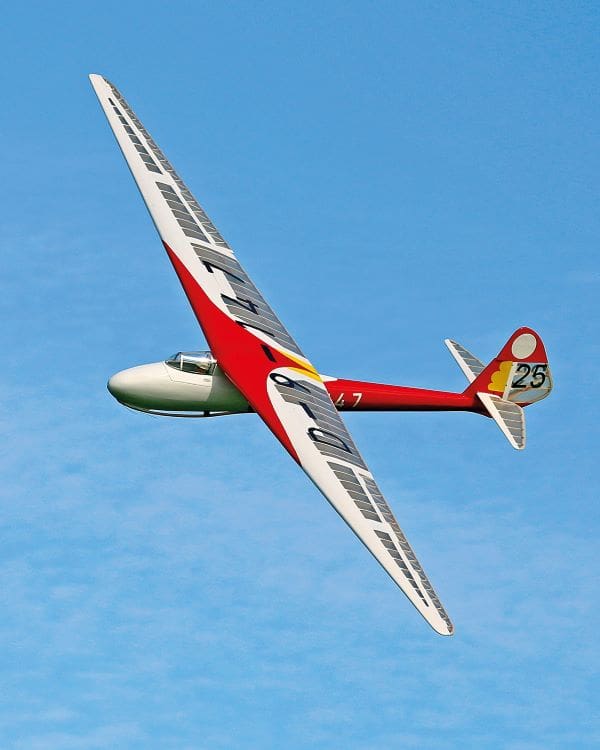
The Rhonadler’s advantage is a scale-like flying speed but she suffers slightly in directional control, most prominently in the yaw plane, possibly due to the lower airspeed degrading control authority.
Having said that, I really do like Ronnie’s flying characteristics, mainly because of the differences with the Petrel, as this adds an extra dimension when it’s time to go flying.
All in all, a success, then. If anyone fancies one for themselves, I can easily make the drawings etc. available. Should your interest be piqued you can see these models in action on YouTube by putting into the Google search box: RIDING WITH RONNIE and SLINGSBY TYPE 12 PETREL QUARTER SCALE.
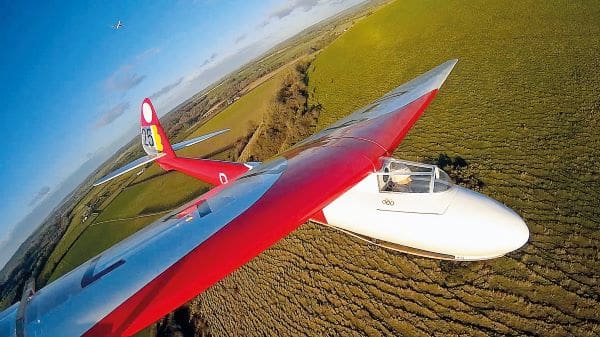
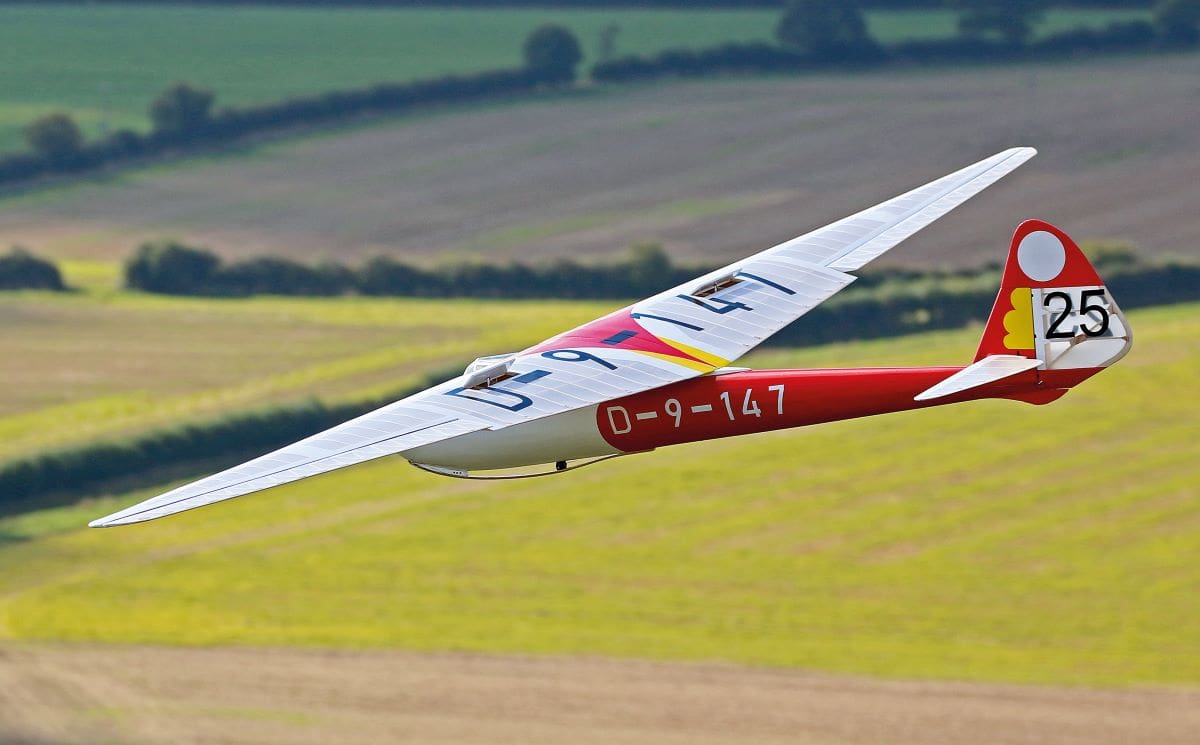
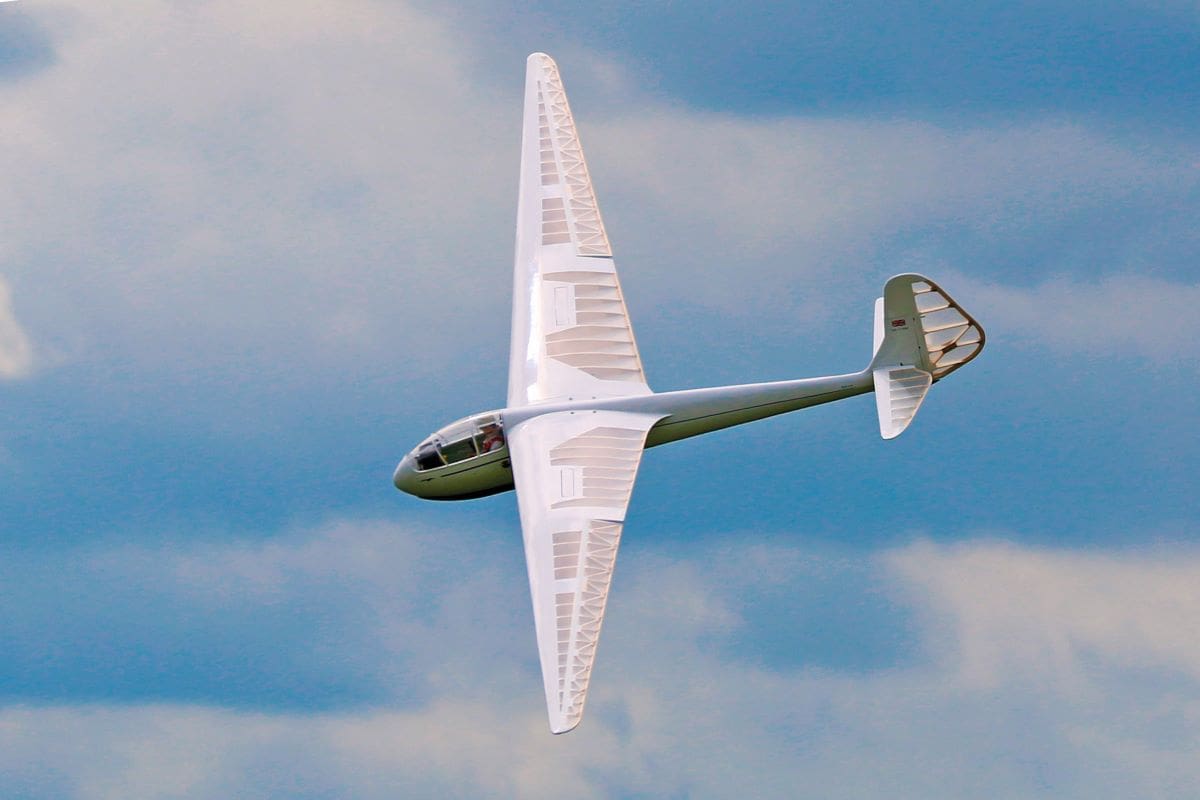
PROJECT CONCLUSION 2
Back in October we were able to welcome a rare visit from long-time scale gliding enthusiast Chris Dunning to our County Model Flying Club site. The 1/5th scale RCM&E Petrel seems to have proved to be a popular choice for many and Chris’ version looked resplendent in its white and blue livery.
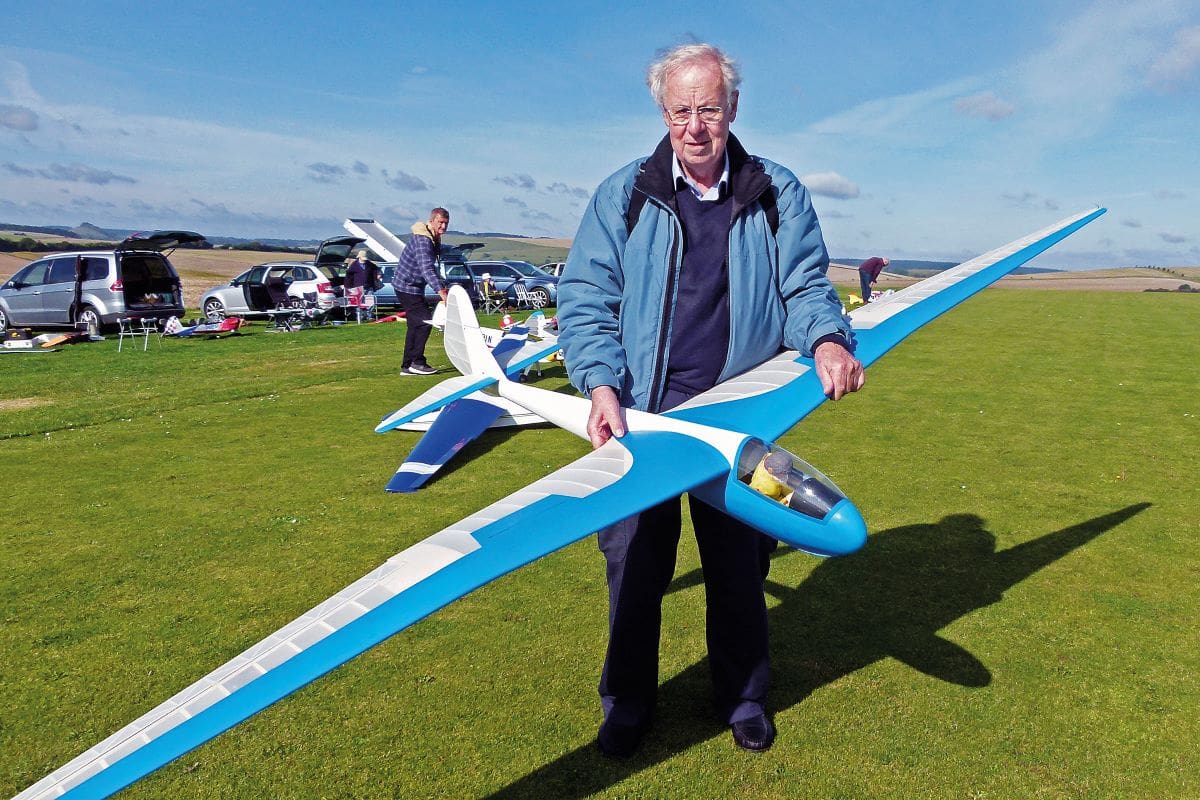
PROJECT CONCLUSION 3
Displaying a remarkable turn of building speed, clubmate Bill Ebdon showed up at the patch just before Christmas with his new 1/5th scale Minimoa, built from the recent RCM&E plan. He was happy with the result but confided that he had some reservation about the amount of play in the closed loop cables operating the rudder.
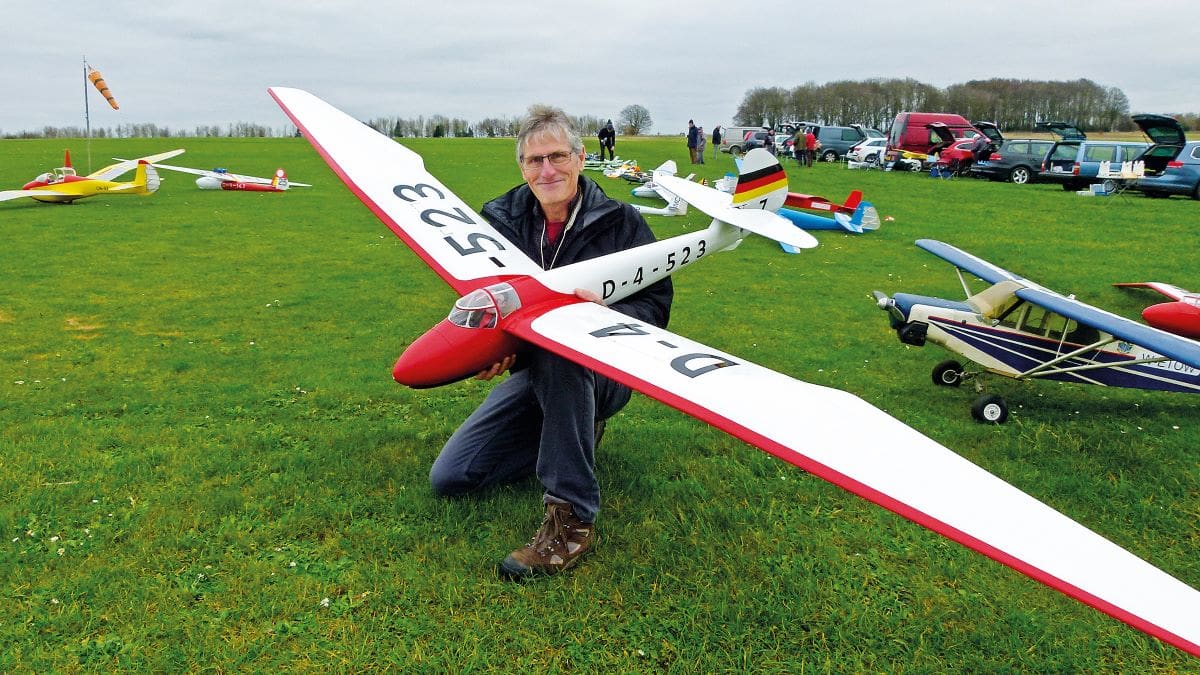
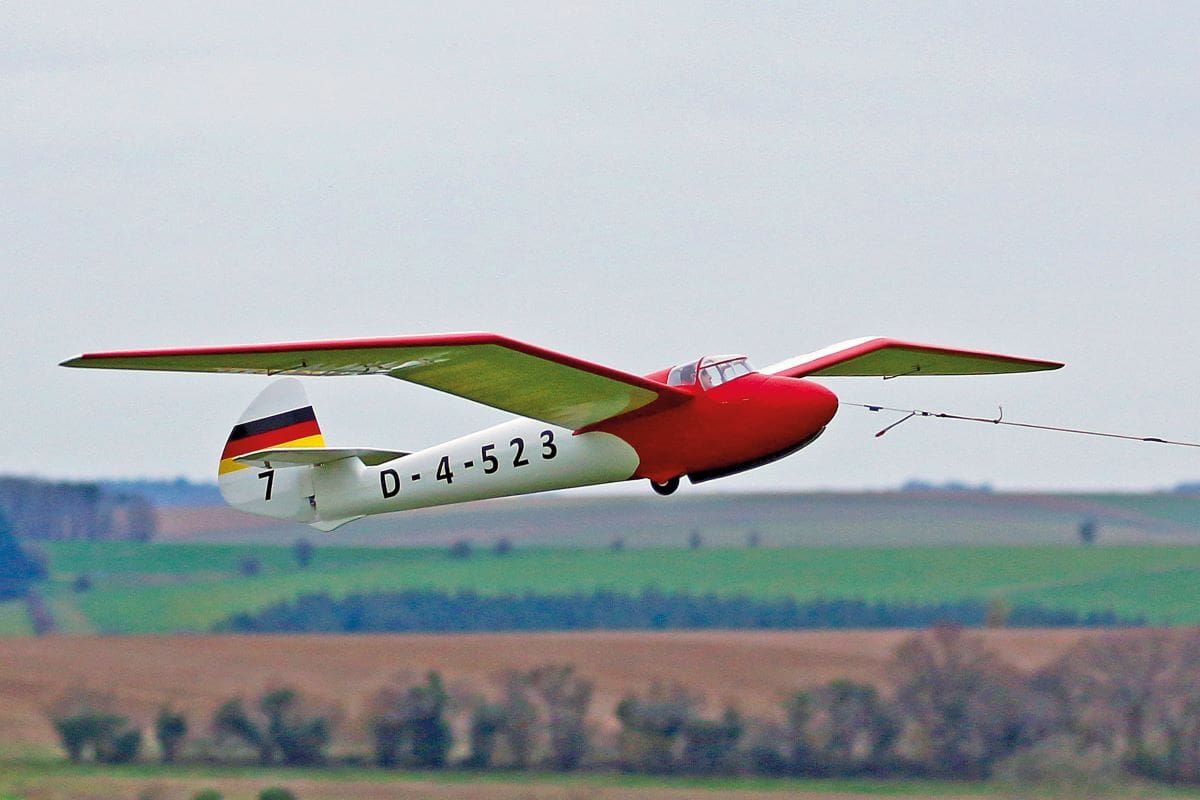
As a serial Minimoalist, I know only too well that a Mini’s AMR (All Moving Rudder) can stretch the builder’s patience a tad at connecting up time. This is because, like the full-size, the cables exit in the gap between the rudder and the fuselage, and it’s in this gap that the crimps have to move in order to give adequate movement. This is not helped when you consider that the rudder servo needs to be behind the rear of the cockpit glazing in order for the pilot not to be put in the uncomfortable position of sitting on top of the servo arm!
So, as I fingered the rudder’s slightly excessive play, I thought a word with Smallpiece might be in order. I explained the situation and entreated him to ‘treat Bill gently’ as he embarked on his maiden flight.
I couldn’t help but be reminded of an occasion when we visited an aerotow in France, many years ago. A nervous French pilot lined up a similar-sized model to one of the Brit tug pilot’s enormous Wilga tug. With a blend of gestures and agonized facial expressions the poor chap managed to express that he wanted a very slow, careful tow. With an impassive nod, the Brit expressed his understanding, whereby he opened the taps and performed a near vertical climb. The glider pilot’s responses were mostly incomprehensible, but probably contained the word ‘Zut’ and possibly the ‘M’ word. The irony is, of course, that a near vertical tow to height can often be described as the safest way up, due the fact than line cannot very well go slack, and, as many an aerotow veteran will tell you, a slack line can often lead to a slack trouser situation.
With all this in mind, I watched the Minimoa’s maiden flight from behind my car, ready to make a run for it. But it all turned out to be the mildest of anti-climaxes. As this was the first example I had seen from the free plan, I was relieved to observe that it displayed all the characteristics of the original, although I do have one peeve to express…
All the models I have seen locally from the recent sets of free plans have, without exception, all been lighter than my originals. Either they have all been filled with Helium or I am going to have to stop using lead-based adhesives!
PROJECT INTERRUPTUS
I described myself above as a Minimoalist, and here’s the proof.
I seem to have found myself building Minimoa v10. This is based on my quarter scale plan but modified to represent the Swiss-registered HB-282, last seen hanging in the Wasserkuppe museum in Germany.
This is the only early production Minimoa in existence and the principle differences are: a differently-shaped rudder, less dihedral, Schempp-Hirth airbrakes and a one-piece blown canopy. The latter must surely cause a degree of heartburn for the Scale Police: a full-size classic glider with a modern modification that, if perpetrated by a modeller, would surely cause said modeller to end up in Scale Police Clink.
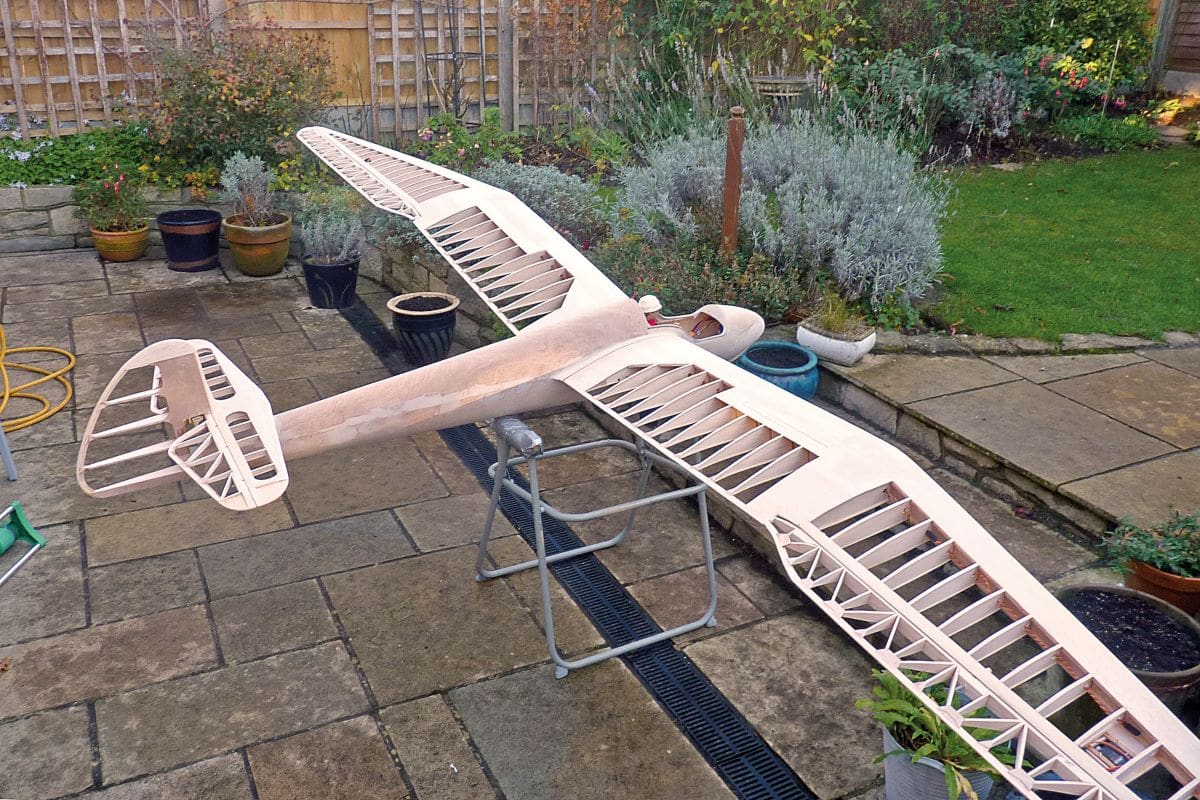
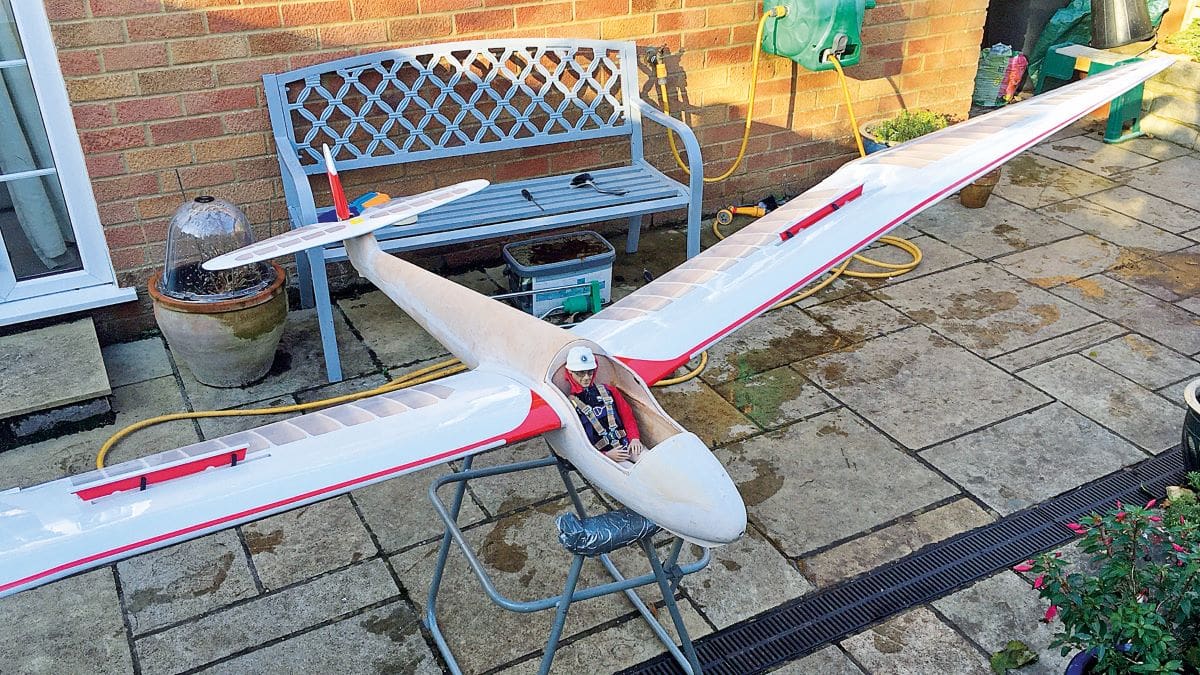
Having come to the conclusion that the non-scale colour scheme on my recent original wasn’t really ticking all my boxes, I have always liked the HB-282’s scheme and thought that the use of matt clear and coloured film on this version would work very well. So, undaunted, I set too with a will, and it was only in the final stages that I met up with a snag.
What with Brexit, Covid and supply chain shortages, there was now a non-availability situation with the material from which canopies are made, PETG. The irony is this: I had one Skylark 4 canopy left in stock, from which the Minimoa’s canopy could be fashioned, but I made a bodge of it, cutting it out from too far back and ending with the wrong profile. Thus, it is that although all the flying surfaces are covered, the fuselage remains not so lucky and will remain so until I can make up the canopy and finalise the shape of the fuselage at the front.
So, I parked the airframe in the hangar and started a new project. But here’s the thing… Some four weeks later the new project is also nearly completed and waiting for – you guessed it – a canopy.
More next time around, if you can stand the tension!
[email protected]


